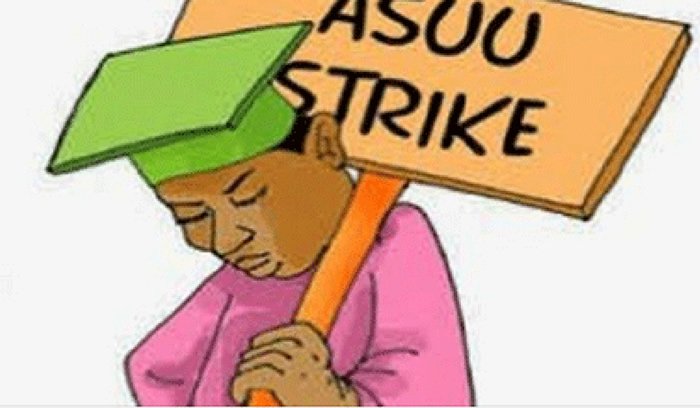
Academic Staff Union of Universities has gone for broke with its declaration of indefinite strike, ending its roll-over strategy since its February 14, 2022 call out of lecturers in public universities. The union must have decided to force issues, considering that in recent times, momentum has been building up against the six-month-old strike by ASUU that has grounded academic activities in publicly owned universities across the nation. The lecturers are being backed to the wall as Federal Government negotiators, its spokespersons and critics, mainly on social and print media, project ASUU members as self-serving, overindulged and lacking empathy for their students. The broadcast media are not left out as the ASUU strike has been the subject of discussion and phone-in programmes on radio and television stations. Editorial writers and columnists are having a field day, pontificating on the face-off. The initial groundswell of support for ASUU is gradually giving way to a weariness-induced attitude of e don do (enough is enough) by a growing segment of the public. It is understandable. Those who have been largely parents, in absentia, are being compelled to be parents, in situ, for six continuous months and many are not finding it easy. It has occasioned frayed nerves at the family level. Yet, neither the Federal Government nor ASUU is yielding substantive ground. Deadlock. Stalemate. Then, ASUU, apparently to bring issues to a head, decided to declare a comprehensive, indefinite strike, apparently for issues to be resolved, once and for all. It is a dare, a showdown—literally taunting the Federal Government: bring ‘em on! Federal Government/ASUU are in a vice-grip, as it were. What gives? Will it be a sledgehammer response from government or a compromise?
Does ASUU have a strong case and an appropriate strategy? Yes, ASUU has a strong case but its strategy has come under attack. There is a general consensus that ASUU’s agitation for better funding of universities is a laudable cause. What has been largely contentious is the strategy. Retired Prof. Jide Osuntokun, a distinguished academic and administrator, described a situation where ASUU has continued to deploy the strike weapon, futilely, for decades as “madness.” Prof. Funso Famuyiwa, a professor of medicine, in an 11-item reaction to Osuntokun’s prognosis, pointed out that as of 2010, the Federal Government owned 37 universities and many other tertiary institutions but noted that (President Goodluck) “Jonathan went on to establish several more as (the President, retired Major General Muhammadu) Buhari after he has also done.”
“Isn’t there some madness in all of this,” asked Prof. Famuyiwa. Of course, it is madness to establish many more universities when you cannot properly fund existing ones. And that is the crux of the matter—funding. So, it is ASUU ‘madness’ versus governments ‘madness’ because state governors, who also frivolously establish new universities, are part of this ‘madness’. But there is some rationality to ASUU’s’ madness’ of repetitive adoption of strike action because it has never been a precipitate first option. Over the years, the Federal Government, starting from the Obasanjo military regime, has avariciously gobbled many institutions, without the capacity to run them effectively because, according to Prof Famuyiwa, “it wants to control everything!” Yet, ministers of the Federal Government could still be prancing around, in the public arena, in self-righteous indignation, trying to demonise ASUU. Where is the sense of responsibility for the problem they, ab initio, created? There is the laughable incitement attributed to the Minister of Education, Adamu Adamu, that students should sue their lecturers for going on strike! That is ‘alawada’ (comedian) talk.
Many, like Prof. Osuntokun, have had sweeping condemnation of ASUU’s deployment of strikes as a weapon of negotiation, implying it had been a failure. I think that is specious, uncharitable and a spurious generalisation. First, it is not the case that successive ASUU executives just wake up one day and precipitately declare a strike. They first engage government in dialogue, sometimes protracted dialogue. It is when dialogue is deadlocked, agreement reached but not signed or terms of agreement not substantially implemented that strike becomes the last option. That has, often, been the sequence. And, really, has successive Nigerian governments been amenable to reason? To conclude that the strike option has been a failure is an exercise in mischief. There have been gains. The tertiary education funding agency, TETFUND, is a standout achievement from ASUU strikes as that agency has been instrumental to the limited infrastructure development in federal and state universities and academic manpower training through scholarships for postgraduate studies and for research. Still on the contentious efficacy of the strike option, isn’t it the norm that government officials often come into interaction/relationship/negotiation with organisations and the people with bloated arrogance and condescension, as if they are doing the people a favour? Strike or militancy, therefore, seems to be the language to speak to government to get some understanding (apology to President Buhari).
Why is ASUU’s showdown with government, with its indefinite strike, justified? It is justified on the basis of the tottering state of Nigeria’s education system, in totality, from primary to tertiary level. It is a dilapidated house due for reconstruction, sparing it outright demolition. This strike may be the opportunity for such rebuilding. Now, let us look at a few indices of the decadence in Nigeria’s education system. Nigeria, the giant of Africa, is conspicuously missing from the World Education Forum’s list of the top 10 African countries with best education system in its 2022 report. That list has Seychelles as number one; South Africa, second; Ghana 7th; Namibia 9th and war-torn Libya in 10th position! Nigeria is also not on the list of the top 10 African countries with the highest literacy rate, topped by Equatorial Guinea with 95.3%; South Africa, second with 94.3% literacy rate; Libya, 5th at 91.00%; Zimbabwe, whose late president, Robert Mugabe, Nigerian ill-informed commentators like to disparage, has 86.5% literacy rate, placing it 8th in Africa. Nigeria’s literacy rate is put at 62% but with 10.5 million out-of-school children, aged 5-14, the highest in Africa and second highest in the world after India!
The cake is with university ranking that justifies ASUU’s agitation. Nigeria is listed as having the highest number of universities in Africa—262, followed by Tunisia, 204; Morocco, 153. Others in the top 10 are Kenya, 129; South Africa, 123; Algeria, 104; Ethiopia 73; Egypt 70; Ghana 70 and Uganda 69.
However, while Nigeria has the highest number of universities in Africa, in the Times Higher Education’s World University Ranking 2022, it is only the University of Ibadan that is ranked among the top 10 universities in the continent and in the 10th position! South Africa, which has less than half the number of Nigerian universities—123—has the top three best universities in the continent (University of Cape Town, Stellenbosch University and University of Witwatersrand). In fact, among the top 10, South Africa has five; the additional two being the 5th-placed University of Kwazulu-Natal and Durban University of Technology at 9th. Ghana’s University of Cape Coast is ranked 4th.
This graphically shows that for Nigeria, university education is long in quantity but very short in quality. And this is what the ASUU struggle is all about—restoring quality to university education in Nigeria, particularly federal and state-owned universities.
- Dr Olawunmi of the Department of Mass Communication, Adeleke University, Ede, Osun State writes via [email protected]; 0803 364 7571





